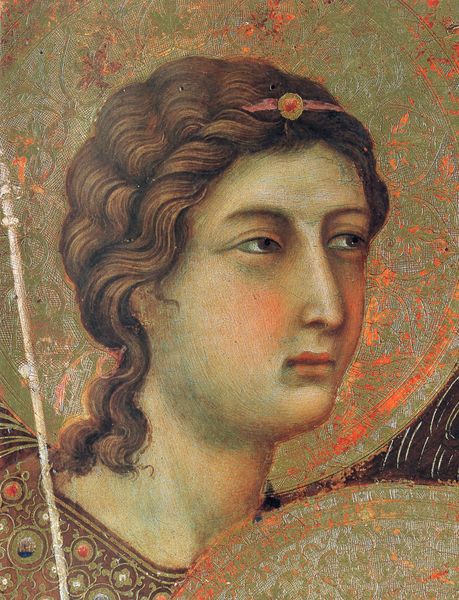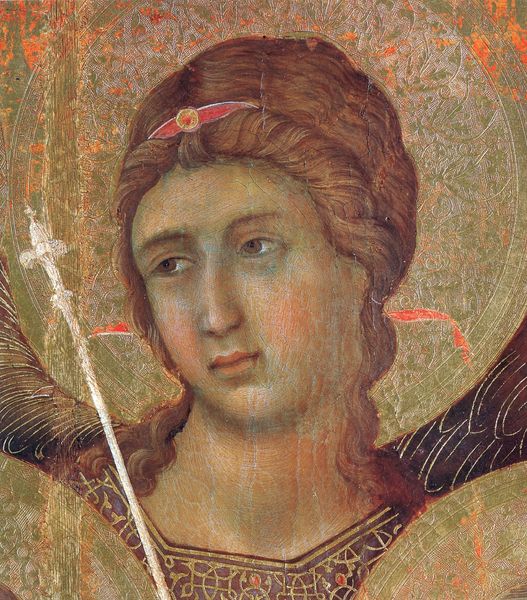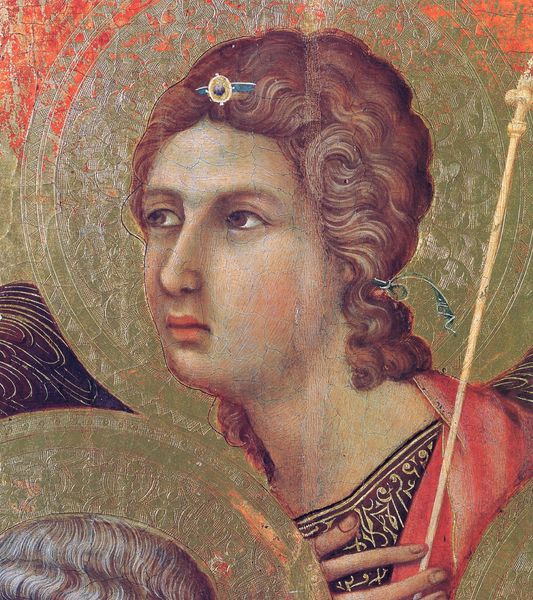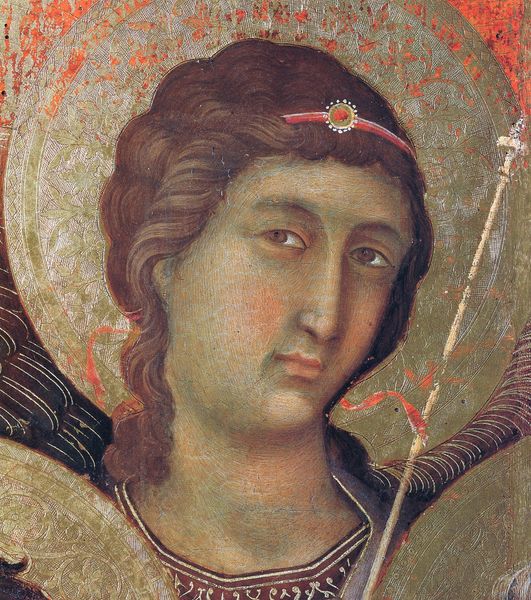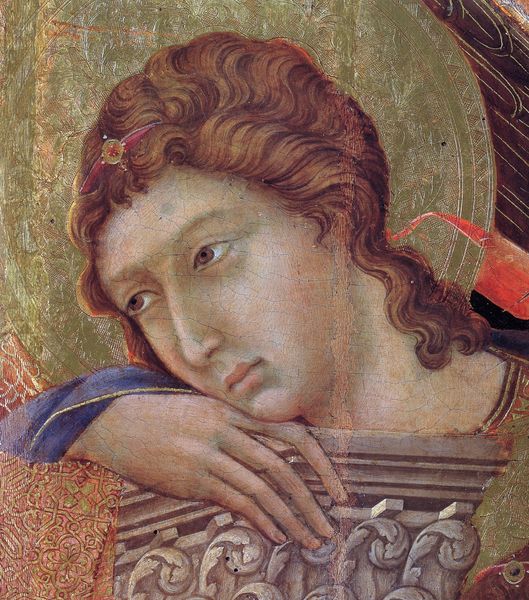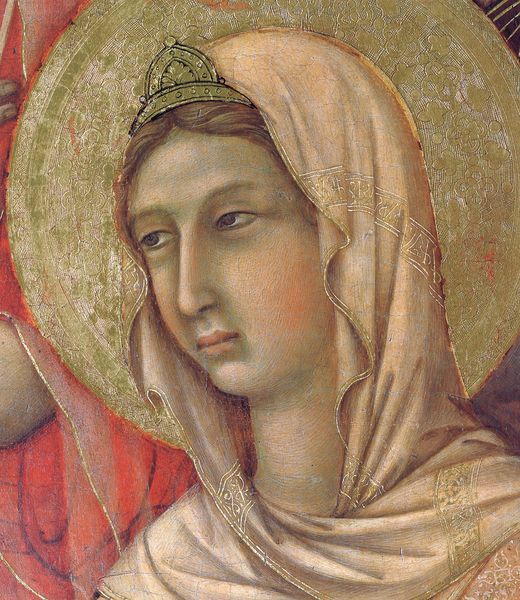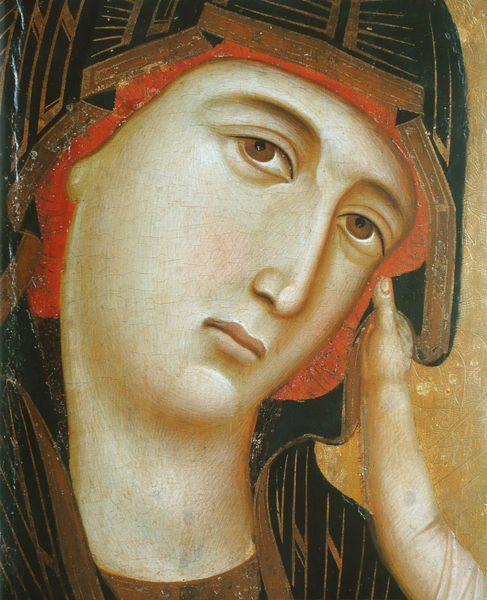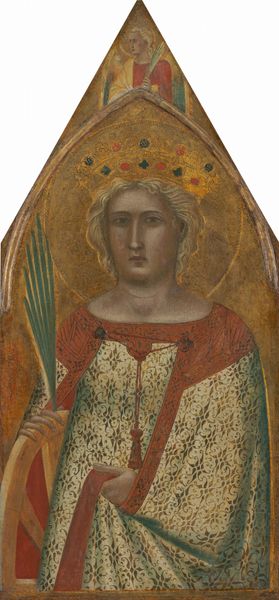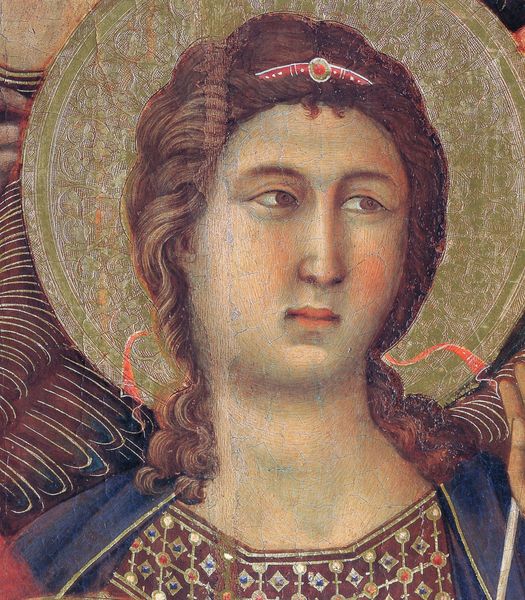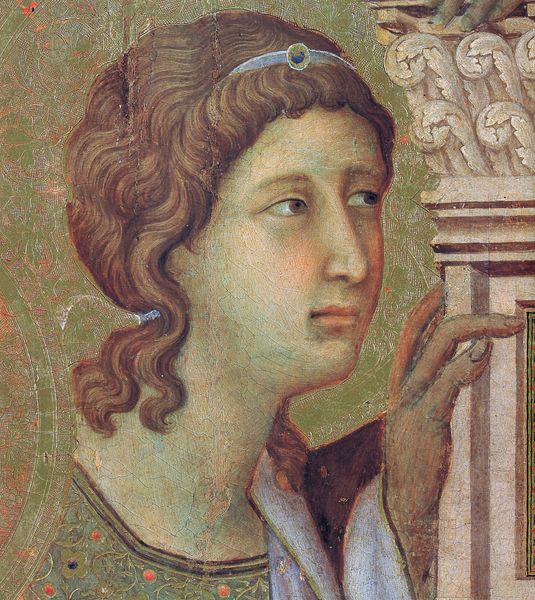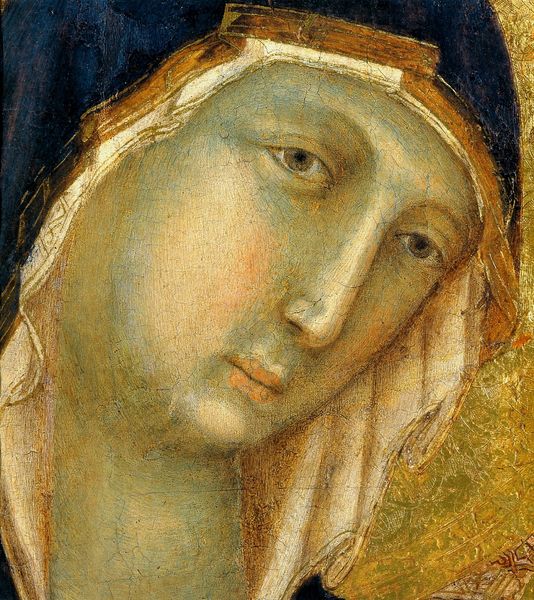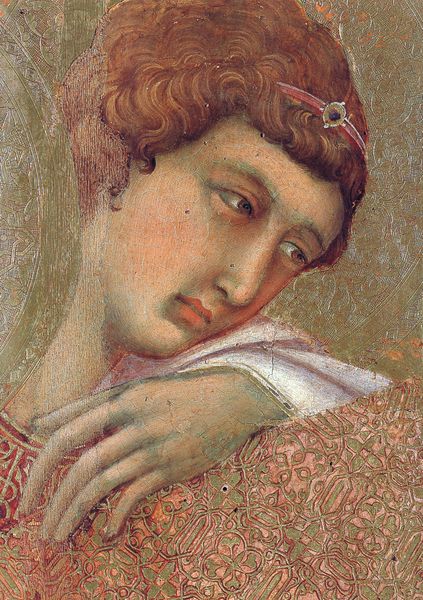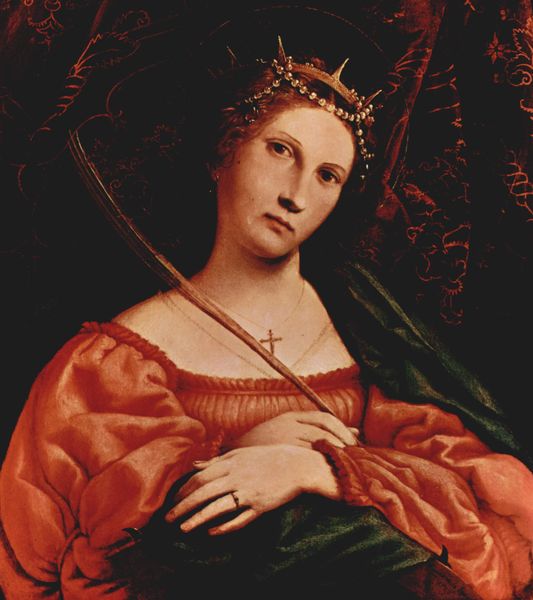
tempera, painting
#
head
#
tempera
#
painting
#
sienese-school
#
oil painting
#
christianity
#
nose
#
history-painting
#
italian-renaissance
#
portrait art
#
angel
#
christ
Copyright: Public domain
Duccio painted this fragment of "Madonna and Child on a Throne" in the late 13th or early 14th century. The angel's face is presented in a flat, frontal manner typical of the period, yet the gaze is gentle and directed. The face seems to be illuminated from within. See how the artist used light and shadow to model the cheekbones and the subtle curves of the mouth? The texture created through the brushstrokes gives a tactile quality to the hair. This image functions within a larger semiotic system, drawing on established codes for representing the sacred. The halo, for example, immediately signifies the angel's divine status. Duccio challenges the fixed Byzantine style by instilling a sense of naturalism and emotional depth within the formal structure. He created something that encouraged the viewer to engage on a more personal level. The angel's contemplative expression and the delicate rendering of its features invite meditation on the divine and human, reminding us that art is always in dialogue with cultural values.
Comments
No comments
Be the first to comment and join the conversation on the ultimate creative platform.
